(单词翻译:单击)
One of the most famous scenes in science fiction cinema comes at the end of the 1968 hit "Planet of the Apes." Astronaut George Taylor, after traveling in space for 2,000 years, apparently has landed on an alien planet ruled by intelligent apes that are determined to exterminate the planet's primitive human population.
科幻电影中最令人难忘的一幕,出现在1968年末的《人猿星球》中。宇航员乔治·泰勒,在太空中航行2000多年后,在一个由智猿统治的外星球着陆,这些人猿想消灭地球上的原始人类。
Taylor manages to free himself and an indigenous female companion from captivity and decides to ride off on horseback to explore the planet's so-called nuclear war-ravaged forbidden zone, despite warnings from ape elder Dr. Zaius that he won't like what he will find. Taylor and his partner struggle to cross a harsh, otherworldly looking landscape, full of deep, startlingly hued canyons, until they finally reach a shoreline. That's where Taylor finds the half-buried Statue of Liberty and realizes that he's not on a distant planet after all, but a future version of Earth.
泰勒不但试图自救,还想解救一个被囚禁的土著女子,他不顾老猿Zaius博士的警告——“讨厌星球上发现的异类”,决定骑马去探索这个星球上的核战损毁禁区。泰勒和他的同伴艰难爬过地貌奇特的领地(深度惊人的大峡谷)后,最终到达了海岸线。在那,泰勒发现了半埋在地里的自由女神像,才意识到自己根本不是在什么遥远的外星球,而是穿越到了地球的未来。
A cynical moviegoer might wonder in retrospect why it took Taylor so long to realize that he actually was back on his own planet, since it had a breathable atmosphere, a hospitable climate, and vegetation and animals such as horses that he'd seen before. But the filmmakers managed to make Taylor's cluelessness believable, by putting him in a place that an unwary person easily could mistake for an alien world. Much of the Forbidden Zone, for example, actually was Red Rock Canyon State Park in California, where the towering, red-tinted rock formations look as if they belong on Mars.
挑剔的观影人可能会想,既然那个星球气候宜人,能正常呼吸,还有他熟悉的植被和动物(如马),为什么泰勒要费那么长时间才发现自己身处地球呢?但制片人为泰勒设定的场景,很容易让粗心人误认为他身处外星球,并觉得这些愚蠢的情节真实可信。但影片禁区中的大部分场景,实际取景于加州红石谷州立公园,因为那些高耸的红色岩石看上去就像火星。
And Red Rock is just one of many places on Earth that are so strange-looking that they seem as if they ought to be on some other planet. Here are 10 of the most alien-looking locations right here on Earth.
红谷似乎属于外星球,但它仅是地球上各种怪模怪样领地的冰山一角。本文将介绍地球上10个看上去最像外星球的地方。
10.Atacama Desert, Chile
10.智利的阿塔卡玛沙漠
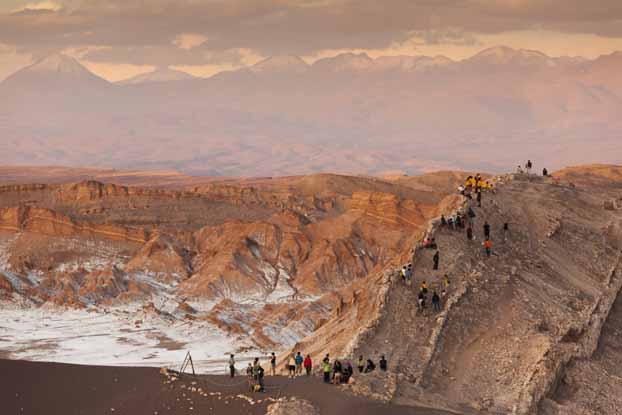
The Atacama, which stretches 600 miles (1,000 kilometers) from Peru's southern border into northern Chile, is what climatologists describe as an absolute desert. It is filled with sterile, bone-dry stretches where rain has never been recorded for as long as humans have been measuring the weather. As a result, much of this parched area is totally devoid of vegetation.
在智利的阿塔卡马沙漠,虽没有降雨记录,却生活着100万居民,阿塔卡玛沙漠从秘鲁南部边界开始,绵延1000千米(600英里)与智利北部接壤,气候学家称其为“纯沙漠”:此地贫瘠,干燥,自人类测量天气以来就没有过降雨记录。因其干燥,沙漠大部分地区寸草不生。
With features such as sand dunes and lava flows, it's not hard to imagine the Atacama as being similar to the landscape that robotic probes — and someday, astronauts — would find on Mars. That's one reason that NASA has used the Chilean desert as a test site. In 2005, for example, a NASA probe detected microbial life in the Atacama's seemingly barren soil, as scientists are hopeful that they'll also be able to do on Mars.
所以,不难想象,配上沙丘和岩浆流,阿塔卡玛沙漠俨然就是机器探测器(或将来的宇航员)在火星上探测到的地方;这也是为什么美国国家航空航天局,会把智利的沙漠当做测试地点。如在2005年,航空航天局在看似贫瘠的阿塔卡玛沙漠里探测到了微生物,因此,科学家们对在火星上发现生物一事充满希望。
9.Craters of the Moon National Monument and Preserve, Idaho
9.爱达荷州月球国家纪念碑和自然保护区
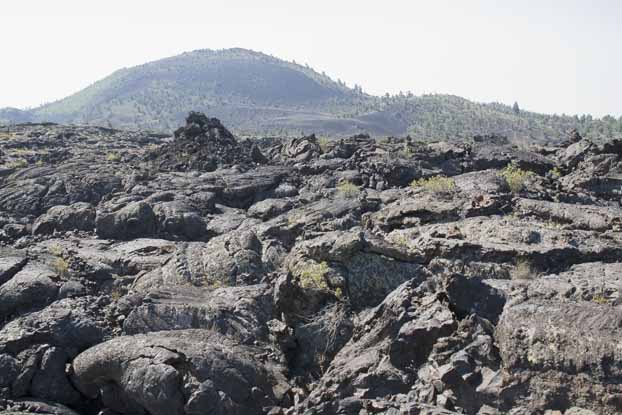
This 618-square-mile (1,600-square-kilometer) region bears an eerie resemblance to the meteor-battered lunar surface. Actually, though, its scarred landscape is the result of the stretching movement of Earth's crust over the past 30 million years. As the crust stretches, it releases pressure on to the hot rocks below, causing them to melt. The hot magma then flows along weaknesses in the surface and results in multiple periods of volcanic activity, the most recent one about 2,000 years ago.
这片自然保护区占地1600平方千米(618平方英里),崎岖不平的怪异地形就像被流星撞击所形成的月球表面。但实际上,满目疮痍的地表,皆因过去300万年的地壳运动而成。地壳运动时,会释放热量传到下面的岩石,引起岩石融化。然后,炙热的岩浆顺着地表流淌,形成火山活动的多发期,而最近的一次火山活动发生在2000年前左右。
During that eruption, lava burst from the Great Rift, a series of deep cracks that stretch for 52 miles (84 kilometers). The Craters of the Moon continues to be volatile, and scientists predict that it will experience future eruptions that will alter its surface.
那次火山爆发,岩浆从东非大裂谷喷射而出,一连串裂缝行为蔓延84千米(52英里)。月球国家纪念碑仍会再次爆发。科学家预测,未来它将继续爆发,其爆发也将改变地表形状。
8.McMurdo Dry Valleys, Antarctica
8.南极洲的麦克默多干谷
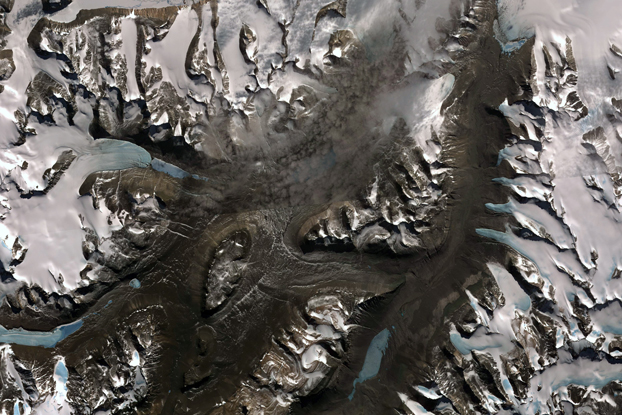
The largest ice-free region in Antarctica is a windswept, frozen desert whose rugged terrain looks as if it belongs on Pluto rather than our planet. Covering 9,300 square miles (15,000 square kilometers), its valleys were carved by glaciers that long ago retreated, leaving in their wake a broken layer of boulders, gravel and pebbles, all of which have been worn down by the harsh weather and sorted by the strong winds.
南极洲最大的无冰区是一片寒风凛冽、地形崎岖的冰冻沙漠,该区域地形看起来就像是冥王星,而根本不是我们的地球。该区域面积约为9300平方英里(1.5万平方公里),很久之前,这里的山谷就被冰川刻蚀,留下一层破碎的砾石和卵石,恶劣的天气消蚀着这里的一切。
The surface contains deposits of marine sediments, in addition to sand dunes and ash, and covers a layer of soil that's millions of years old. Scientists like the Dry Valleys because the lack of ice makes it easier for them to get a look at the current geological processes affecting Antarctica.
该区域表面有着海洋沉积物的沉积,除了沙丘和火山灰外,覆盖在它上面的土壤已经有百万年的历史了。科学家们之所以喜欢南极干谷是因为这里没有冰层的阻碍,他们能够更容易地知道当前的地质作用是怎样影响南极洲的。
7.Etosha Pan, Namibia
7.纳米比亚的埃托河盐沼
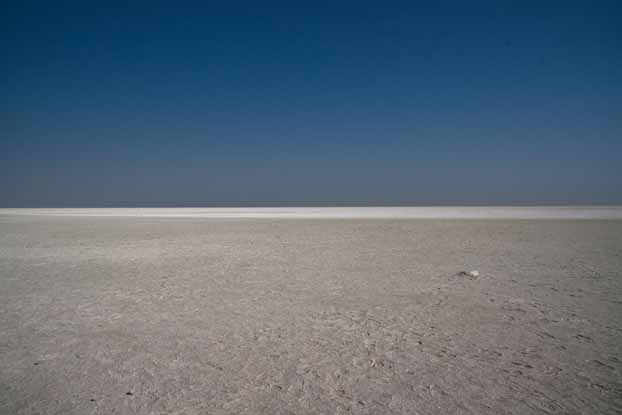
When scientists studied images shot by the Cassini space probe of Ontario Lacus, a massive lake on Saturn's moon Titan, they discovered that it was a depression that drains and refills from below, at low ebb exposing liquid areas ringed by materials such as saturated sand and mudflats. If you get past the fact that it is filled with liquid hydrocarbons, Ontario Lacus bears an eerie resemblance to a place back on Earth — Namibia's Etosha Salt Pan.
当科学家们对由卡西尼号太空探测器拍摄的土卫六(土星的一颗卫星,又称为泰坦星)表面最大的湖泊”安大略湖”图像进行研究时,他们发现这不过是一个从地下排水和补水的凹地,退潮时显露出被物质环绕的例如饱和砂性土和泥滩的液态区域。如果你忽略此地充满液态碳氢化合物这一点,就会发现“安大略湖”和地球上的纳米比亚的埃托河盐沼有着惊人的相似性。
This dried lake bed fills with a shallow layer of fluid from groundwater during the rainy season; the fluid evaporates during the dry season, leaving sediment marks. Etosha, whose name means "great white place" in the language of the Ovambo people, is a 1,800 square-mile (4,800 square-kilometer)expanse of shimmering, dry, baked clay that looks suitably otherworldly.
在雨季,埃托河盐沼干枯的河床会被浅层地下水润湿;在旱季,水将会蒸发留下沉积物。Etosha一词,在奥万博人(the Ovambo)的语言中指的是“巨大的白色之地”,1800平方英里(4800平方公里)范围内一片波光粼粼,干燥的气温,烘烤的粘土,看起来如此的超凡脱俗。
6.Richat Structure, Mauritania
6.毛里塔尼亚的理查特结构
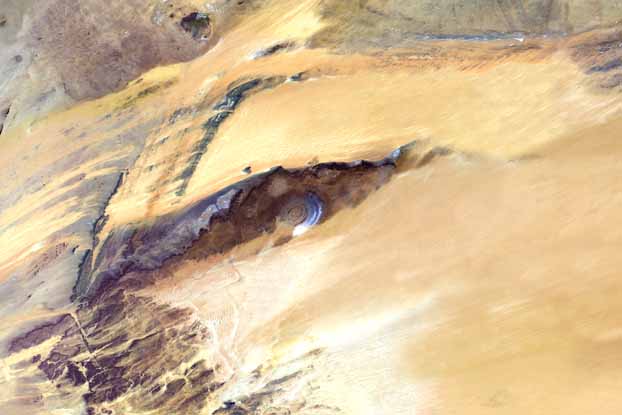
You've probably seen pictures of Jupiter's mysterious Great Red Spot which actually is a gigantic storm about two to three times the size of our entire planet. But when viewed from space, Earth has a similarly strange-looking surface feature.
你可能见过木星神秘的大红斑的照片,那实际上就是一场巨大的风暴,比我们地球上的风暴大了两到三倍。当从太空中看的时候,地球表面也有类似的特征。
The Richat Structure in Mauritania is a gigantic circular swirl, about 30 miles (50 kilometers) in diameter, that forms a bull's-eye in an otherwise featureless expanse of west African desert. When astronauts first noticed the Richat Structure in the 1960s, it was believed to be a crater left behind by an immense meteor, because of the uniformity of its curves. But scientists now think that it's a rock formation of Paleozoic quartzites, laid bare by erosion. Either way, though, it's plenty strange looking.
毛里塔尼亚的理查特结构是一个巨大的圆形漩涡,直径大约三十英里(50千米)。另外这个漩涡在毫无特色的广阔无垠的西非沙漠形成了一个靶心。20世纪60年代宇航员第一次注意到理查特结构时,基于结构曲线的均匀性,他们认为那是一颗巨大的流星陨落时留下的陨石坑。但是现代科学家认为那是古生代石英岩的岩层,因为被侵蚀而裸露在外。然而,不管哪种说法才是正确的,这种结构确实是够奇怪的。
审校:喵喵 校对:落花生 编辑:Freya然 来源:前十网


